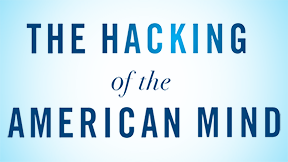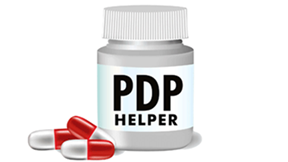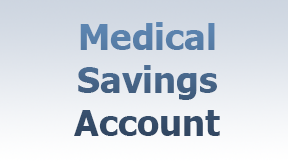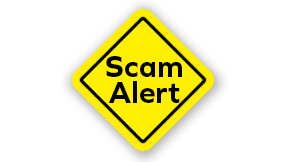
Robert Lustig opens this chapter with a rhetorical question, which prescription medication (PM) has had the greatest societal impact. Cholesterol-lowering drugs? No. Anti-malarial drugs? No. Drugs to fight AIDS? No. Anti-inflammatories such as ibuprofen? Narcotics used for anesthesia? Viagra? No, no, and no.
The answer is Prozac (fluoxetine). Lustig explains that 16 to 18 percent if the population will at some time experience a major depressive disorder (MDD) in their lives. At any given time, 6-8 percent of the population are affected.
How were modern anti-depressants discovered? People with tuberculosis (TB) have been and still are treated with the drug, isoniazid. TB patients back in the 1950s out of the blue experienced a lifting of their depression. This led to further research, and scientists discovered that serotonin was responsible, in part, for the feeling of happiness and contentment. The serendipity effect of the drug is that it helped boost serotonin.
Lustig explains that there are two types of depression, retarded depression and agitated depression. Those with retarded depression can’t get out of bed and would kill themselves if they could. They require hospitalization. Much more common is agitated depression. These people can be anxious, irritable, sleepless, and just plain miserable. Both types of depression can be associated with individuals either eating and sleeping too much or too little. When Prozac was introduced in 1986, it helped people with both types of depression.
Pharmaceutical companies rushed their own versions of anti-depressants to the market. The common ones are as follows:
- Zoloft or sertraline
- Celexa or citalopram
- Paxil or paroxetine
- Lexapro or escitalopram
- and others
These PMs are also know as selective serotonin reuptake inhibitors or SSRIs and are now prescribed to alleviate a great many metal disorders. SSRIs and the third most prescribed class of drugs and are the most prescribed for people under 65. Shockingly, 11% of adolescents are taking an SSRI, not just for depression but for anxiety, anger management, premenstrual syndrome, and obsessive-compulsive disorder.
Serotonin differs from dopamine in many ways. First, about 90% of the serotonin is produced in your gut, where serotonin is involved in neural and hormonal response to feeding and how full you are. About 9% can be found in your blood platelets. That means that only 1% of your serotonin is produced in your brain. Doing a urine test for serotonin levels is more reflective of what’s going on in your gut than it is in your brain.
There’s no biomarker for depression, no blood test that your doctor can administer. To diagnose clinical depression, doctors use a questionnaire known as the Beck Depression Inventory…
Serotonin neurons fan out to many different parts of the brain. Happiness can have many different definitions, manifestations and inputs because different interactions between regions of the brains influences different phenomena—joy, elation, love, etc. Please read pages 101-103 for more details.
The Sublime Science of Serotonin
Serotonin physiology has the same points of regulation as does dopamine.
1) Synthesis: The primary building block is tryptophan. Your body does not produce tryptophan,;it must be obtained from your diet. It’s found in small quantities in eggs, fish, and poultry. Vegetable protein sources are notoriously low in tryptophan.
Most of the tryptophan consumed is going to be used to produce serotonin in your gut…tryptophan is in competition with at least two other amino acids, phenylalanine and tyrosine, which are the building blocks for dopamine.
Put another way, dopamine completes with serotonin.
My Comment: This issue with tryptophan is one of many problems associated with a vegan diet.
Continuing:
2) Action:
Similar to dopamine, serotonin is released from its nerve terminals and must traverse the synapse to meet up with its receptor. Serotonin nerve terminals are all over the brain in order to bind to different receptors to exert different effects…
One receptor in particular, the serotonin-la receptor seems to be uniquely involved in decreasing anxiety and mitigating depression. It’s the binding to this receptor that is equated to well-being and contentment…Buspurone (Buspar) is a commonly used serotonin-la agonist in the treatment of severe anxiety.
3) Clearance:
After the packets of serotonin transmitters are released from the neuron, they need to traverse the synapse to get to the receptor. After they have bound to the receptor, they hang out in the synapse waiting to be recycled or deactivated.
This is the site of action of the newer SSRIs such as Prozac and the above-mentioned others. The intent of these drugs is to increase the amount of serotonin within the synapse to elevate mood. Having too much serotonin in the synapses can also be a problem.
For complete details of Lustig’s synthesis, action, and clearance discussion of serotonin, please read pages 104-106.
Always Look in the Bright Side of Life
Lustig explains that how well the serotonin mechanism in your brain depends on how happy you are.
Temperament goes a long way in explaining happiness, and differences in the serotonin transporter go a long way in explaining differences in temperament.
My comments: The four classic temperament types are sanguine, choleric, melancholic, and phlegmatic. There’s no question that people are born with these different and distinct temperaments. That there may be a serotonin connection is most intriguing.
Continuing: Lustig points out that blacks tend to exhibit less anxiety compared to whites and Hispanics. He suggests that perhaps one explanation is that the questionnaires used to derive this data are “culturally biased.” He also suggests that considering the history of slavery and discrimination, blacks might suffer from more anxiety.
Conversely, he mentions that blacks as a group have a higher percent of religious affiliation compared other racial groups. He suggests that this may provide then with a social basis for achieving happiness despite socioeconomic adversity.
Lustig also suggests that there may be a genetic difference or a biochemical reason as well. There is a known genetic difference in blacks which may slow down the clearance of serotonin. It’s like blacks have their built in SSRIs enabling them to become less depressed in adverse circumstances.
Too much serotonin can become a bad thing. Some of the side effects are irritability and suicidal thoughts and actions. There can also be negative levels of mood and impulsive aggression.
Serotonin syndrome, which results from too much serotonin activity because of SSRI overdose or interactions with other drugs, is characterized by changes in mental state and muscle tone, and autonomic nervous system problems. Going overboard on serotonin can take someone who’s morose and give them just enough brain activity and mental energy to make them suicidal, which is why people on anti-depressants shouldn’t dose themselves.
Lustig points out that there is no magic pill. A dose of Prozac for an 18 year-old may not work the same way for a 40 year-old. He mentions the use of anti-depressants for a woman suffering from post-partum depression. Her serotonin levels may return to normal after a year, but only 25% of those who take anti-depressants experience a full remission. Lustig ends the chapter with two rhetorical questions: Short of SSRIs, what hope do we have of achieving any meaningful happiness in life? Are we really a Prozac nation? Not quite. Read on.
 This AEP is our third year of using PDPHelper. The following are some tips to help us do accurate searches for you on Medicare.gov.
This AEP is our third year of using PDPHelper. The following are some tips to help us do accurate searches for you on Medicare.gov. The Medical Savings Account (MSA) type of Medicare advantage plan has existed previously, but it will be new for many people. This plan is available in selected states including Montana, Utah, and Wyoming but not yet in Idaho, Oregon, or Washington. Before we delve into the mechanics of how the MSA plan works, let’s review the types of Medicare advantage (MA) plans.
The Medical Savings Account (MSA) type of Medicare advantage plan has existed previously, but it will be new for many people. This plan is available in selected states including Montana, Utah, and Wyoming but not yet in Idaho, Oregon, or Washington. Before we delve into the mechanics of how the MSA plan works, let’s review the types of Medicare advantage (MA) plans. By Marc Lichtenfeld, Chief Income Strategist, The Oxford Club
By Marc Lichtenfeld, Chief Income Strategist, The Oxford Club